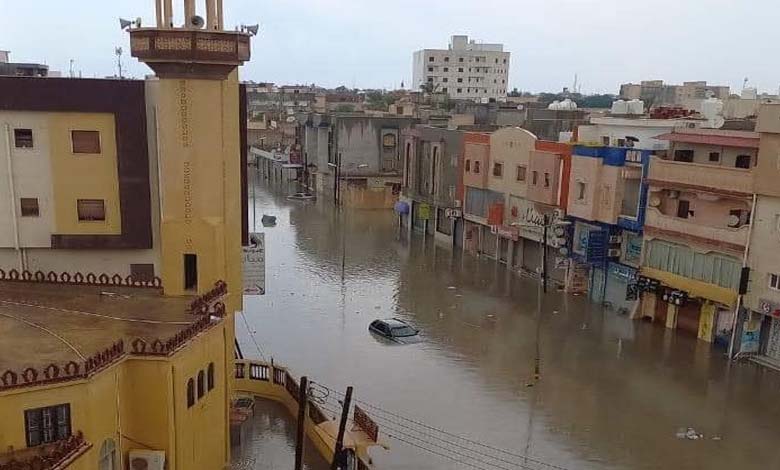Analysts reveal latest developments in Libya after the cyclone crisis
Assessing the Damage, Government Response, and Environmental Concerns

Analysts are shedding light on the recent developments in Libya following the cyclone crisis. The extent of the damage in the city of Derna is significant, with a total of 6,142 buildings, including 1,500 damaged structures. Among these, 891 buildings have been completely destroyed, 211 partially, and approximately 398 buildings were submerged in mud. The total area affected by the floods and torrents in Derna is estimated to be 6 square kilometers.
The Libyan Parliament called for an emergency session to discuss the disaster that has affected multiple areas due to Cyclone Daniel.
Meanwhile, the appointed Prime Minister of Libya, Osama Hamad, described the incident as an “unprecedented catastrophe in Libya.” Entire residential areas were swept into the sea due to the devastating floods and torrents. He urgently appealed to medical and relief organizations to take immediate action during these challenging times.
Furthermore, Fathi Al-Marimi, an advisor to the Libyan House of Representatives, announced that investigations are ongoing to hold those responsible accountable for the worsening consequences of the flood disaster. He noted that the parliamentary session is addressing matters related to the flood catastrophe that struck Derna and the eastern regions of Libya.
In a statement to the press, he mentioned that government service agencies are being deployed in Derna to assess the situation on the ground. He confirmed the existence of specialized teams and committees actively working to address the consequences of the floods, including their impact on water resources, sewage systems, and damaged buildings.
Dr. Issa Al-Shalwi, a crisis management professor, stated that Libya has moved beyond the initial shock of the storm catastrophe and entered a phase of recovery. He pointed out that this catastrophe has resulted in several crises, including those related to migration, transportation, and communication. Addressing these crises involves the formation of specialized teams, which require further international and local support.
Al-Shalwi added, “We have entered a new phase, which is the search for the bodies of the victims, not the rescue of survivors.” He continued, “There is no doubt that a large number of bodies are still under the rubble, and if this situation persists for a long time, Libya may face a severe environmental crisis.”
He further elaborated that significant efforts are currently being made in terms of sanitation and disinfection to prevent any environmental disasters. Cyclone Daniel resulted in extensive losses across various sectors, including the deterioration of infrastructure, contamination of drinking water, and more. The crisis management in Derna operates through two aspects: the civil aspect and the security and ethnic aspect.












